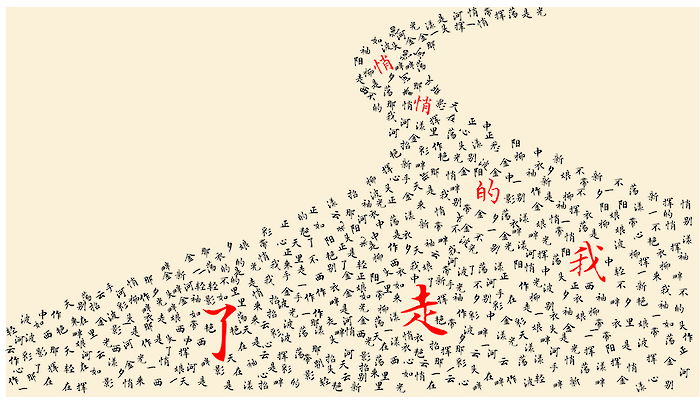Sally Rooney’s novels define the voice of Millennial fiction
Amassing almost universal praise from critics for her clear-eyed, incisive commentary on young life, Nick Harris unpacks the writings of this young and promising novelist

Just how good is Sally Rooney? The most refulgent and promising writer of a generation if current acclaim about her is to be believed. Writing for and about university populations just like Cambridge’s, the almost saccharine applause for this young writer’s first two novels has been extraordinary. But beyond just good reviews, Rooney has been named by some as the hero of a new kind of Millennial fiction, a social novelist for the 21st century.
The experiences of her novels feel universal
Conversations with Friends, her debut, was nominated for a platter of awards, and was followed by Normal People, which was preemptively longlisted for the Booker before release. Both explore the same spheres of interest, concerning themselves with the nicotine-stained and wine-swilling world of Ireland’s top university, and Rooney’s alma mater, Trinity College in Dublin. The first follows Frances and Bobbi, two close friends and former lovers, who become involved with an older and glamorous couple (Melissa and Nick). The second is instead a simpler bildungsroman, tracking the sixth-form and then university lives of two friends Connell and Marianne. The fundamental power of these novels does not come from their narrative trajectories however; it is the bare honesty of Rooney’s incisive commentary about young life in the modern world that makes them so engrossing and thought-provoking.
All Rooney’s four main young characters occupy a world which is peculiarly recognisable, especially using Cambridge as a reference point. She started the first of these novels whilst still studying for an MA, and her reflecting of the intellectually charged and emotionally unstable environment is striking in its precision. Strident but callow students are heard to declare ‘I’m never going to get a job’, the campus population ‘have identical accents and carry the same size Macbook under their arm’ and in Normal People the sixth-formers dance to Kanye West in a ‘cavernous, vaguely purple’ club. Even the description, which is light in Rooney’s prose, is embedded in the contemporary, with Marianne’s face being ‘like a piece of technology…her two eyes are cursors blinking’. This is a large part of the strength of Rooney’s novels, in their evocation of the quotidian student world, stretching even from ‘the debating society inviting a neo-Nazi to give a speech’ to the ‘rapid movements of someone dealing impatiently with a drunk friend’. Each of these illuminating flashes, for there are many more, carries with it a knowing nod of recollection that is uniquely tailored for readers of Rooney’s age and younger.
The virtues and flaws of student life are starkly and honestly laid out
But these novels are not content to only echo the student world of today, they are directly concerned with the trials which come with it. Conversations with Friends and Normal People share an interest in the composition of modern relationships, presenting undulating sexual and romantic partnerships, and all of difficulties which accompany them. But Normal People goes further, portraying the grievous deterioration in mental health of one character and the emotional and physical abuse faced by another at the hands of both her loathsome family and a series of rebarbative boyfriends. This, along with explorations of suicide, self-harm and homophobia confirm that Rooney’s thematic threads are closely fastened to the pulse of student populations across Britain, channelling and exploring their key difficulties and anxieties.
Rooney’s style, described as ‘spare and unelaborate’ in The Times, is integral to how cleanly this message is delivered. Her prose is idiosyncratically unadorned, reading generally as a confident series of statements such as ‘Marianne nods. He rubs at his neck’ and ‘She felt frustrated. Her face and hands were hot’. Even if this can sometimes read like a description of someone else’s novel, the intended, and generally supplied effect, is that of clear-eyed candour, perfect for the weighty emotional subjects Rooney tackles.
At times though it can feel stolid and even ascetic, particularly given that these are novels about the internal meanderings of adolescents. For instance, when one reads that ‘her body was all soft and white like flour dough’ (from a male narrator), one wonders whether the relentlessly honest solemnity which surrounds this distinctly unerotic sentence is appropriate for the moment of sexual chaleur it describes. It could also be true that at a moment like this, it might be stylistically apt to let the prose ‘go’ briefly, if only to more accurately represent the priapic racings of the male brain. Indeed, for someone who has an MA in American Literature, Rooney’s prose is hardly imbued with the reckless energy or zest found in the writings of that nation (if you are expecting a female Alexander Portnoy you will be sadly disappointed). Rooney’s publisher’s acclamation of her as the ‘Salinger for the Snapchat generation’ by no means includes Caulfield’s juvenile twanging voice.
This is only minor however, and the style, plain and direct thought it might be, is very much distinctive and hers. It is far more gratifying to read someone which such a capable grasp of the 21st century world for students and young people, comparable perhaps to reading the social comedies of Kingsley Amis as a youngster in the 1950s. In her insights, description and occasional humour, Rooney has confirmed herself as the foremost chronicler of what she herself calls ‘that weird age where life can change a lot from small decisions’.
Personally, I find Rooney’s novels so riveting and engaging because, despite being set across the Irish Sea, they felt like they could be happening anywhere in Cambridge. The virtues and flaws of student life are so starkly and honestly laid out that the experiences of her novels feel universal, at least from the point of view of another university student. Whether it is the occasional loneliness, the drunken mistakes, the friendships formed and conversations had, Sally Rooney has a remarkable ability to capture these moments in an inimitably vivid way.
 News / Cambridge academics stand out in King’s 2026 Honours List2 January 2026
News / Cambridge academics stand out in King’s 2026 Honours List2 January 2026 Interviews / You don’t need to peak at Cambridge, says Robin Harding31 December 2025
Interviews / You don’t need to peak at Cambridge, says Robin Harding31 December 2025 Comment / What happened to men at Cambridge?31 December 2025
Comment / What happened to men at Cambridge?31 December 2025 Features / “It’s a momentary expression of rage”: reforming democracy from Cambridge4 January 2026
Features / “It’s a momentary expression of rage”: reforming democracy from Cambridge4 January 2026 News / Varsity’s biggest stories of 202531 December 2025
News / Varsity’s biggest stories of 202531 December 2025










